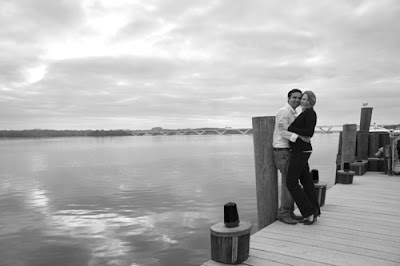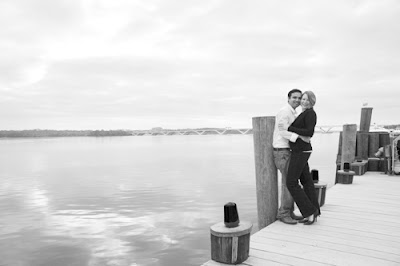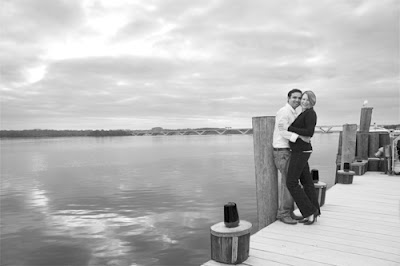Truth be told I find myself ignoring my wet darkroom these days and using my digital one much more. There are many reasons for this, but the main one is convenience. I like many photographers have a day job so I don't always have the time to spend hours in my darkroom. The luxury to be able to start and stop working on an image and start up right where you left off makes it so much easier to work through my images. As you may know you can't quite do this in a traditional darkroom. Plus using a wet darkroom requires a certain amount of setup and and clean up time. Finally scanner software allows us to make great prints from previously unprintable negatives. Some may argue that this allows us to be more lazy as photographers. That may be true, but I look at it this way, anything that allows me to spend more time creating a good image and less time on the technical aspects of photography the better. I should note that I am an Engineer so while I do like the technical aspects of photography I am much more interested in creating art and having photography be my break from my day job.
So after getting my start with film cameras and a traditional darkroom I have, like many others, started moving over to the digital world. Well at least a little bit. The first steps I took was a scanner, printer, and Photoshop so I could start printing my images digitally using scans of my negatives. Then last year I got my first digital SLR. I made the plunge mostly because I teach an intro to photography class on the weekends at The Art League. I don't very often encounter students who are still using film equipment so I needed to be able to speak their language. One consequence of coming from a film background is that I find myself wishing I could add grain to my digital images. Though I also love the fine detailed editing I can do digitally. So here is an example of an image captured on my digital camera and a look into how I went about creating the final image. This isn't really meant to be an instruction manual, I am sure there are better ways to achieve what I did. I freely admit that I have allot to learn about Photoshop.
So first here is the basic image after some adjustments in the RAW editor. In a very real sense this is my digital negative (or positive if you will). The image is nice and neutral, which is always a great starting point. Much of the sky and dock are on the white side of the grey scale which will mean that any adjustment to a higher contrast will push them further to the white end. This will be my main issue to deal with. Obtaining the correct contrast for the couple and maintaining an interesting sky.
 Image straight out of RAW editor
Image straight out of RAW editorIt is clear to me that I am going to have to work the contrast on the couple and dock area separate from the sky and water area. So the first thing I do is use a Levels adjustment layer and a Curves adjustment layer to adjust the contrast of the couple.
 After Level and Curve Adjustment
After Level and Curve AdjustmentAs you can see by adjusting the contrast so that the details of the couple stand out I have washed out the dock and sky. So the next step is to bring back the sky and water. I use a layer mask. I make the couple and dock portion of the mask to be transparent allowing me to keep the adjustments I made. The rest of the image is now back to its original state. I could have gotten here using just a dodge and burn layer, but since I have more in mind I need to basically create a new starting point for contrast adjustments.
 After Layer mask
After Layer maskNow I am going to add another Curve and Levels layer to once again bump the contrast. Focusing on getting the pop I want in the sky and water while keeping an eye on the dock and couple. I want to keep them in a range that I can dodge and burn back to what I want.
Now all I need is to dodge and burn certain areas. Mainly I need to dodge the couple and wood pylons to bring back the detail. I will also dodge the highlights in the sky and water to create a bit more contrast. Finally I will burn in the dock to help accentuate the grain and texture there. Here is a look at the naked Dodge and Burn layer I created show you the areas I lightened or darkened.
Now that looks pretty good right? I sure think so. That was until I got a new piece of software called Silver EFEX Pro. I bought this software because I had seen a friend use it and was intrigued by the grain engine. Basically it is the best grain filter I have ever seen. It has quite a few film profiles, now I can't tell you if it accurately recreates specific films, but I can say that I would bet many people would not be able to tell that a print wasn't created from a scan of a film negative. On top of that there are some basic filters that recreate some pretty cool printing techniques. The really cool part is you can fine tune these filters and just use them as a starting point. This tool is also great for converting digital images to B&W. Actually I edited this image before getting the software so it was already B&W. You should also be aware that this software is only intended to create B&W images (thus the name Silver EFEX). So here is the image after running it through the software adding the grain profile of my fav film Ilford HP5 and the High Structure contrast filter.
I'll let you be the judge on how good the grain is. I am a fan! This certainly won't make me drop my film cameras, I love them too much. As much as I complain about time spent developing film I really love everything about film. I am just happy to have an alternative for those times when I have to shoot digital or that time in the future when film may no longer be available. I don't actually think that will happen in my life time, but you never know.







No comments:
Post a Comment